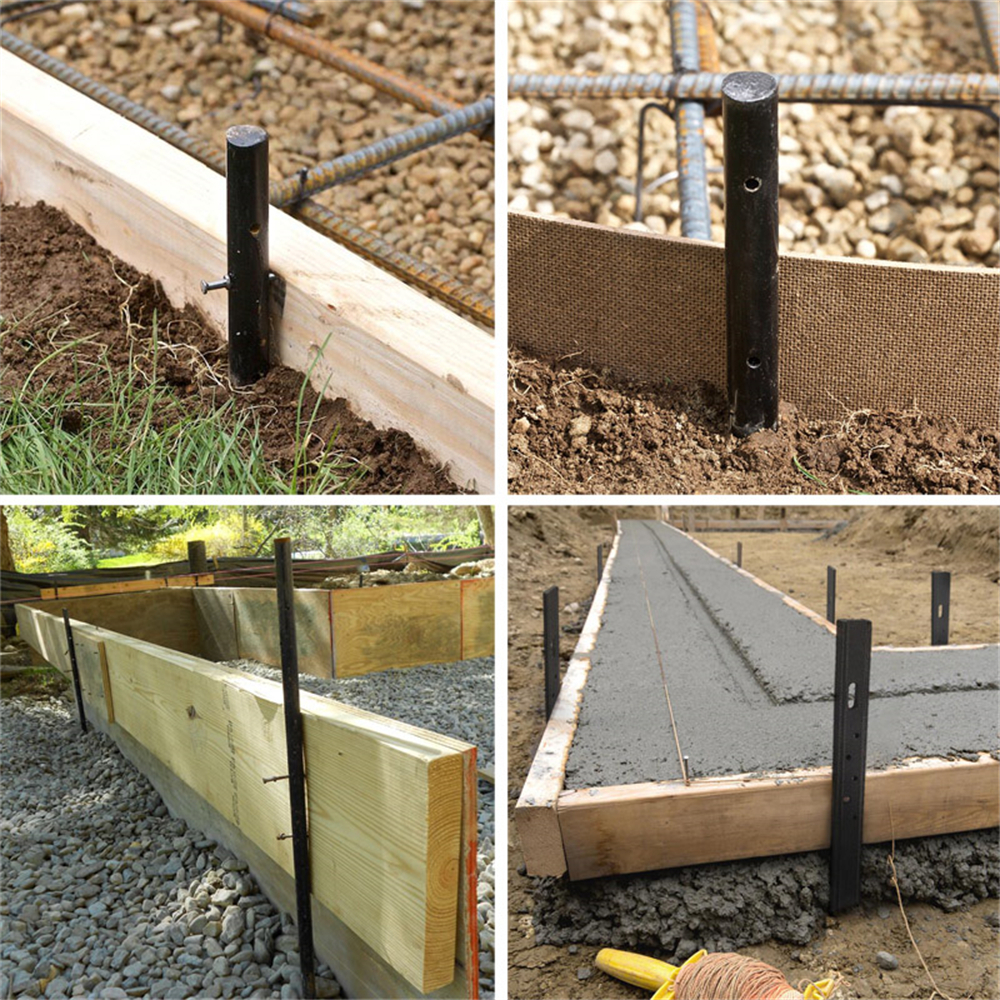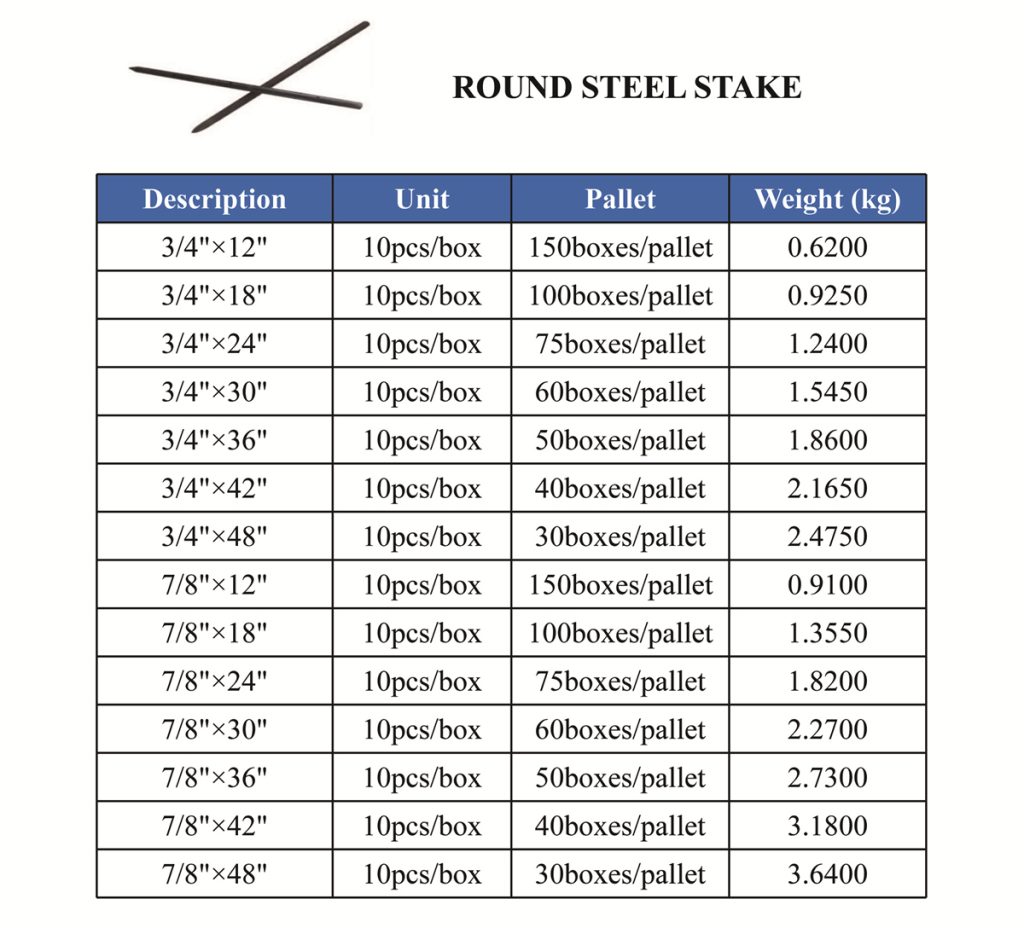Round steel stakes with holes are versatile tools that play a significant role in construction projects. These cylindrical metal rods, featuring strategically placed holes, are essential for various construction tasks, including formwork, concrete work, and structural support. In this article, we will explore how to use round steel stakes with holes effectively in the construction industry.

The Versatile Applications of Round Steel Stakes
Round steel stakes with holes find several crucial applications in construction:
Formwork and Concrete Work
Round steel stakes are indispensable for formwork and concrete pouring. They serve as the backbone of creating precise and stable forms, ensuring the success of concrete work. The holes in the stakes are pivotal for securing formwork materials and maintaining the structural integrity of the final product.
To use round steel stakes effectively in formwork and concrete work:
Position the stakes at even intervals where you intend to establish the form.
Secure form panels or boards to the stakes by running wires or zip ties through the holes.
Confirm that the stakes are level and properly aligned to create a sturdy and accurate form.
Structural Stabilization
Round steel stakes are a go-to solution for stabilizing structures during construction. They provide essential additional support, reducing the risk of movement or collapse in both temporary and permanent structures.
To use round steel stakes for structural stabilization:
Drive the stakes into the ground, ensuring they are firmly anchored.
Attach the structure’s components to the stakes using wires or other suitable fasteners.
Ensure that the stakes are evenly spaced and provide solid support to the structure.
Reinforcement and Fastening
Round steel stakes are employed for reinforcing and fastening various construction components. They help secure building materials, connect structural elements, and ensure the overall project’s stability.
To use round steel stakes for reinforcement and fastening:
Customize the stakes by cutting them to the required length if necessary.
Drill additional holes in the stakes to accommodate specific project requirements.
Utilize the stakes as structural supports or fasteners to connect different components securely.
Conclusion About Use Round Steel Stake With Holes
In the construction industry, round steel stakes with holes are indispensable tools, contributing to the precision, stability, and efficiency of projects. Their adaptability, durability, and versatility make them a cornerstone of any construction toolkit. Understanding how to effectively employ these stakes, whether for formwork, structural support, or reinforcement, is essential for streamlining construction endeavors and ensuring the success of your projects.
FAQS About Use Round Steel Stake With Holes
What are the typical dimensions of round steel stakes with holes used in construction?
Answer: Round steel stakes for construction generally come in various lengths and diameters. The specific dimensions depend on the manufacturer and the intended application. Common lengths range from 18 inches to 48 inches, while diameters can vary from 1/2 inch to 1 inch.

Can round steel stakes with holes be reused in multiple construction projects?
Answer: Yes, round steel stakes can be reused, provided they are in good condition and haven’t sustained any significant damage. Regular inspection and maintenance, such as cleaning and straightening, can extend their lifespan.
What types of materials can be secured using round steel stakes with holes?
Answer: Round steel stakes are versatile and can be used to secure a wide range of construction materials, including wooden boards, formwork panels, concrete forms, and even temporary fencing.
How should I store round steel stakes when they’re not in use?
Answer: It’s best to store round steel stakes in a dry and cool environment to prevent rust or corrosion. Storing them upright in a designated rack or container will help maintain their integrity.
What is the recommended spacing between round steel stakes when creating formwork for concrete pouring?
Answer: The spacing between round steel stakes in formwork depends on the size and weight of the concrete form panels. In general, stakes should be spaced evenly, with closer spacing for heavier loads and larger form panels.
Can round steel stakes be used for underpinning foundations in construction?
Answer: Round steel stakes with holes are typically not used for underpinning foundations. Specialized foundation underpinning techniques, such as helical piers or concrete piers, are more suitable for that purpose.
How can I remove round steel stakes after completing a construction project?
Answer: To remove round steel stakes, use a stake puller or a heavy-duty claw hammer. Carefully lever the stake out of the ground by applying upward pressure while ensuring your safety and the integrity of the stake.
Are there any safety precautions to follow when working with round steel stakes in construction?
Answer: When working with round steel stakes, always wear appropriate personal protective equipment, such as gloves and safety glasses. Be cautious when driving stakes into the ground to avoid injury from accidental hammer strikes.
Can round steel stakes be used as temporary support for scaffolding in construction?
Answer: While round steel stakes are versatile, they are not typically recommended for supporting scaffolding. Scaffolding requires specialized support systems that meet safety regulations.
How do I know if a round steel stake is damaged and should not be used in a construction project?
Answer: If a round steel stake is bent, cracked, or has holes that are deformed or damaged, it should not be used. Damaged stakes can compromise the stability and safety of your construction project. Always inspect your stakes before use.




